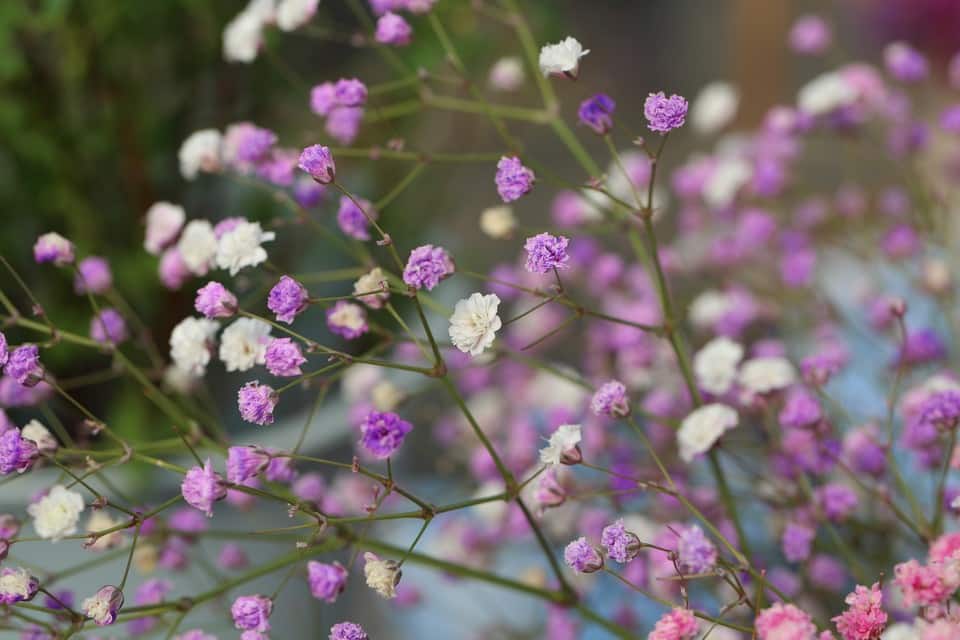- Gypsophila summer sprays of button-like flowers in shades of white or pale pink
Gypsophila – baby’s breath – are a member of the carnation family that are an annual, hardy perennial plant grown for their sprays of tiny, button like flowers in summer, in shades of white or pale pink.
Perfect in a garden border, where their thin, wiry stems and clouds of flowers make them an excellent filler, bridging the gaps between different plants and bringing an airy feel to your planting scheme.
For best results grow gypsophila in full sun position, in moist but very well draining, slightly alkaline or neutral soil.
Regularly dead-head spent blooms to encourage repeat flowering and avoid disturbing the plants once established, as they dislike any root disturbance.
To plant, dig a hole that is the same depth as the plant’s pot. Add compost and plenty of grit to avoid root or stem rot, then water in well.
In windy spots, you’ll need to support taller plants as the plant grows. Feed every few weeks with a general liquid fertiliser.
Cut down the flower stems after flowering, which may produce a second flush of flowers in late autumn.
Sow seeds of annual gypsophila in April or September, directly in the ground where you want them to flower.
Propagate perennial basal cuttings from April until June.
Gypsophila are generally free of most pests and diseases. The main problem likely to be encountered are problems with winter wet, as they do not enjoy sitting in cold, wet soil.






